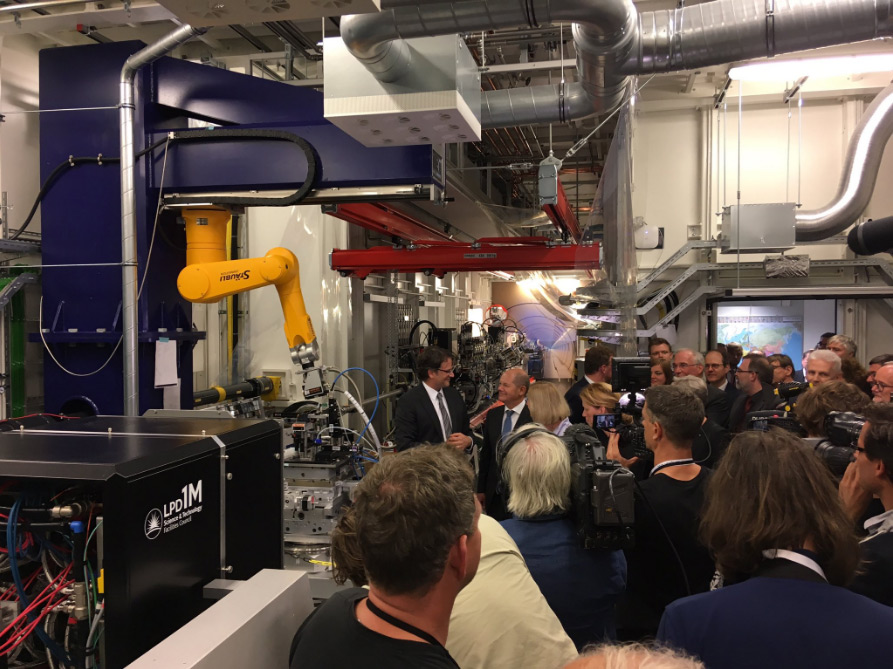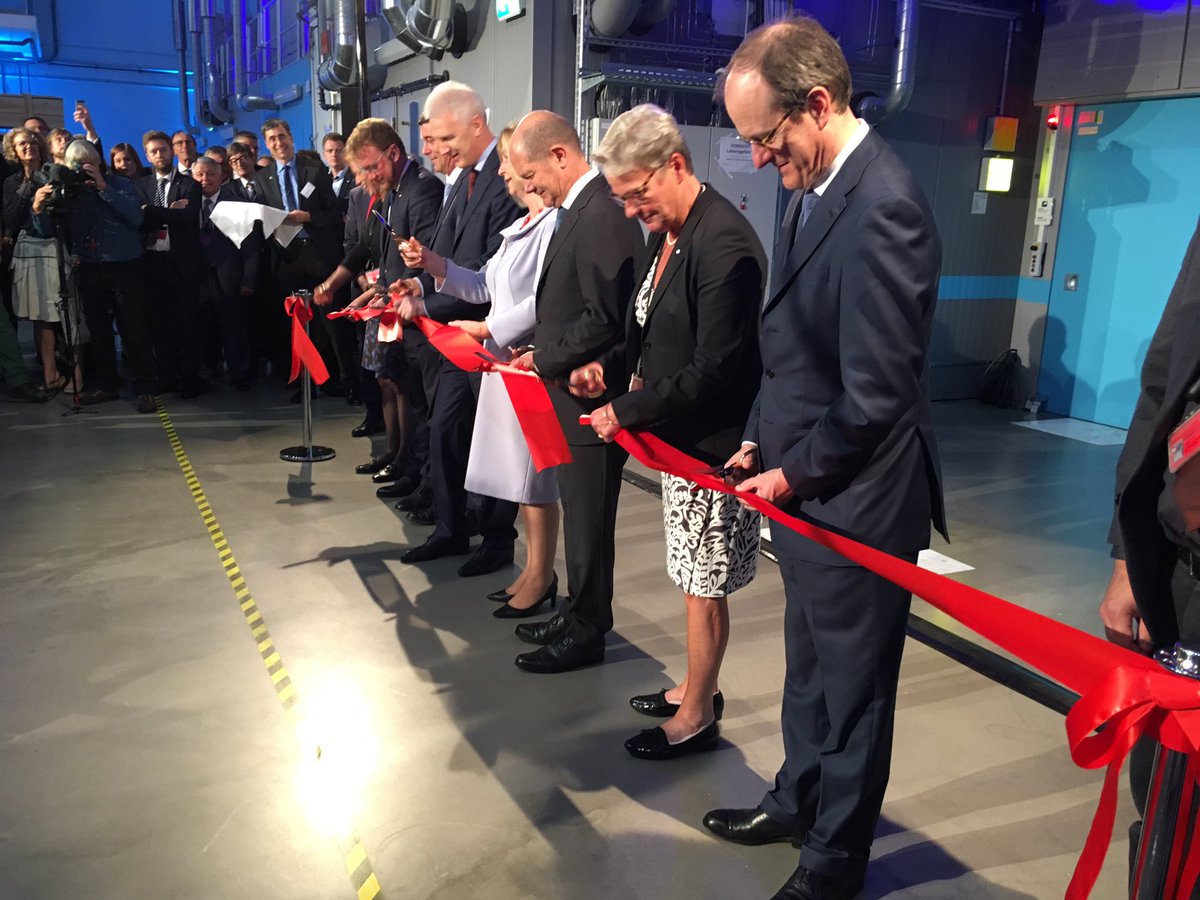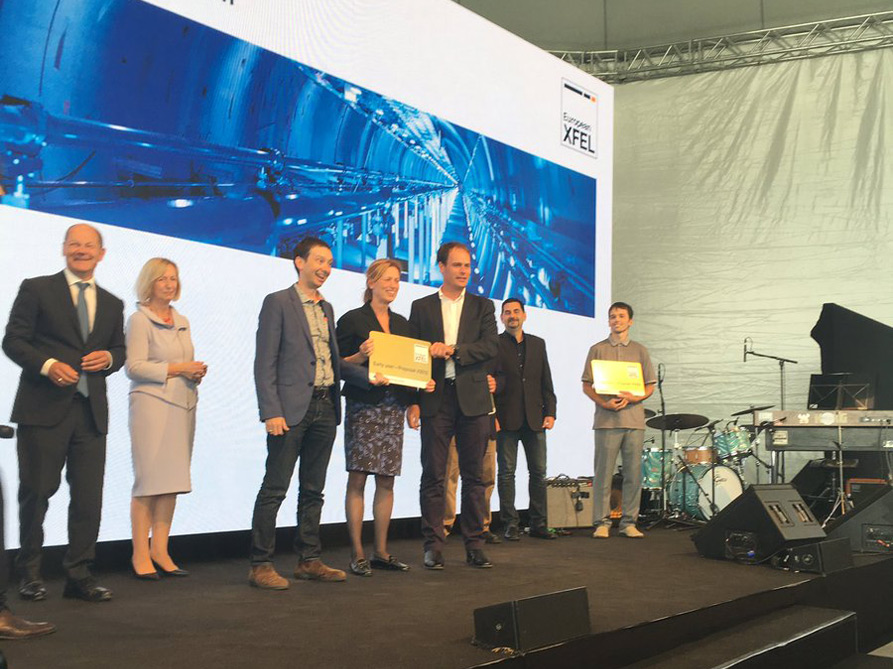Festive inauguration of the XFEL in Hamburg
World science, 01 September 2017
Today, on 1 September 2017, a festive ceremony of the inauguration of the world’s largest x-ray laser European XFEL is being held in Hamburg. JINR Director, RAS academician Victor Matveev is representing JINR at the festive events. RAS academician, Plenipotentiary of Russia in JINR, Deputy Minister of Education and Science of the Russian Federation Grigory Trubnikov is also attending the ceremony.
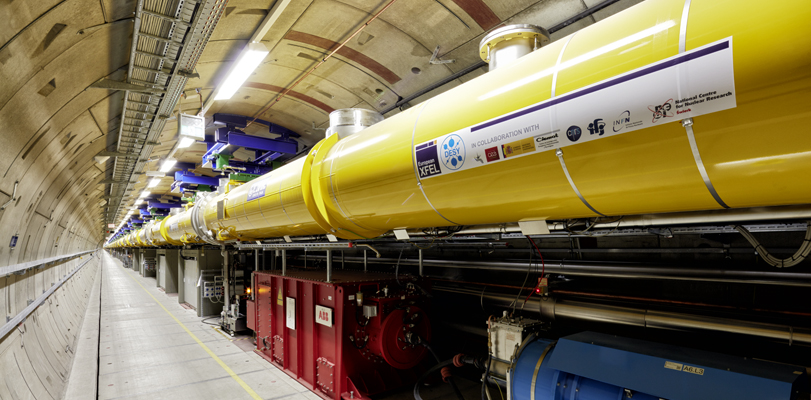 View into the 2.1-kilometre long accelerator tunnel of European XFEL with the yellow superconducting accelerator modules hanging from the ceiling. Photo: European XFEL / Heiner Müller-Elsner
View into the 2.1-kilometre long accelerator tunnel of European XFEL with the yellow superconducting accelerator modules hanging from the ceiling. Photo: European XFEL / Heiner Müller-Elsner
The festive ceremony was opened with welcoming speeches of leaders of the XFEL project, among whom were Professor Dr. Martin Meedom Nielsen, Chair of the European XFEL Council, by Professor Dr. Robert Feidenhans’l, Managing Director European XFEL, and Professor Dr. Helmut Dosch, Chairman of the DESY Board of Directors. After that speeches were made by Ministers and senior officials of the ministries of education of the countries actively participating in the implementation of the project XFEL: Germany, Russia, France, Switzerland, and Sweden. Assistant to the President of the Russian Federation Andrei Fursenko made a welcoming speech on behalf of the Russian Federation. First Mayor of the City of Hamburg Olaf Scholz also addressed the audience with a speech.
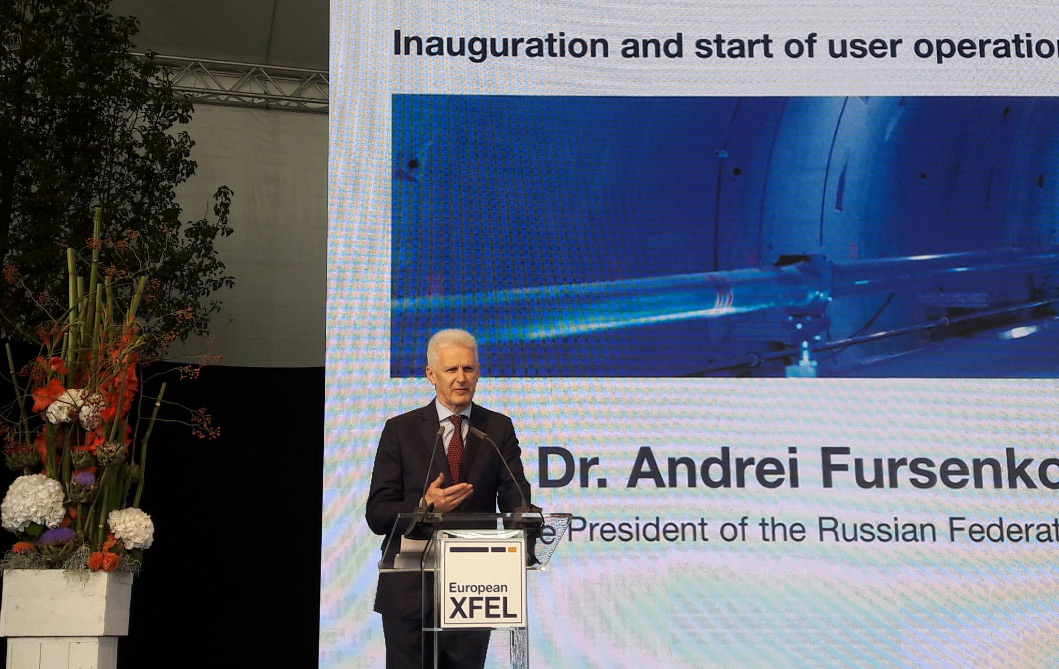 Andrei Fursenko giving his speech. Photo: European XFEL
Andrei Fursenko giving his speech. Photo: European XFEL
The ceremony also included a short musical programme, a screening of film demonstrating the accelerator tunnel with a length of 3.4 kilometers, and a handover of symbolic first user cards.
The official part of the event continued with a tour to the experimental hall where the high guests were acquainted with the high-tech equipment of the XFEL project and a review of experiments based on this equipment. Ceremonial ribbon cutting and pressing the symbolic start button officially launched the European XFEL operating in experimental mode.
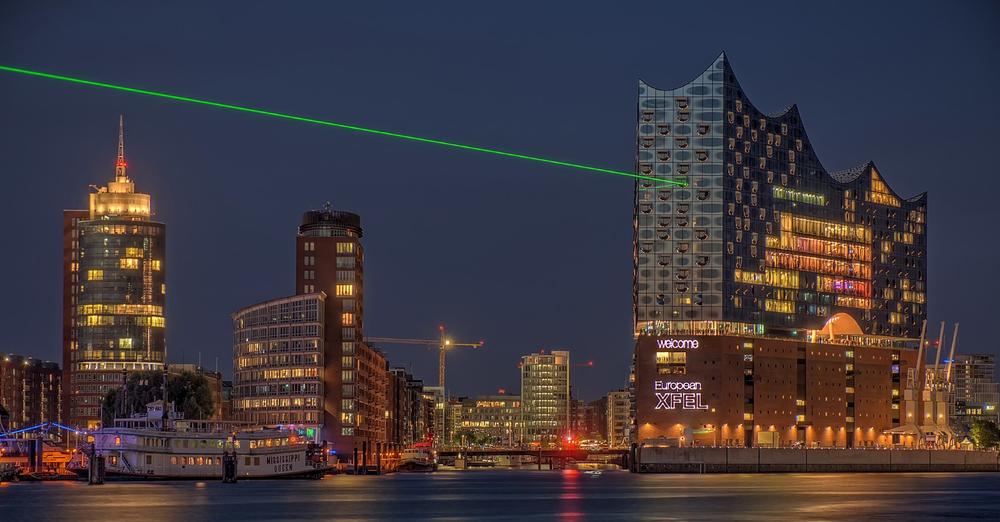 Hamburg says ‘welcome’ to European XFEL! The light and laser installation will run every evening until 3 September (Credit: Michael Schmidt)
Hamburg says ‘welcome’ to European XFEL! The light and laser installation will run every evening until 3 September (Credit: Michael Schmidt)
What is the European XFEL?
European XFEL (X-ray Free-Electron Laser) is a research facility of superlatives. At present, 11 countries are participating in the project. Construction started in early 2009. Russia joined the project in July 2009.
The European XFEL will open up areas of research that were previously inaccessible. Using the X-ray flashes of the European XFEL, scientists will be able to map the atomic details of viruses, decipher the molecular composition of cells, take three-dimensional images of the nanoworld, film chemical reactions, and study processes such as those occurring deep inside planets.
Russia’s participation in the project is extremely important by its intellectual contributions, as well as technical and financial participation. A number Russian stientific researchers is the second after German colleagues in the staff of the European XFEL.
A key part of the accelerator, the so-called electron injector was developed with the active participation of Russian scientists responsible for improving the quality of beams. Thanks to Russian physicists and their equipment this figure exceeded expectations by approximately 40%.
How the European XFEL works?
The European XFEL is located mainly in underground tunnels which can be accessed on three different sites. The 3.4 kilometre-long facility will run from the DESY campus in Hamburg to the town of Schenefeld in Schleswig-Holstein. At the research campus in Schenefeld, teams of scientists from all over the world will carry out experiments using the X-ray flashes. The European XFEL generates ultrashort X-ray flashes—27 000 times per second and with a brilliance that is a billion times higher than that of the best conventional X-ray radiation sources.
To generate the X-ray flashes, bunches of electrons will first be accelerated to high energies and then directed through special arrangements of magnets (undulators). In the process, the particles will emit radiation that is increasingly amplified until an extremely short and intense X-ray flash is finally created.
The European XFEL will generate X-ray radiation with properties similar to those of laser light. There will be several light sources with different characteristics.
More information on the European XFEL website
What is the contribution of JINR’s to the European XFEL?
- JINR in collaboration with DESY were involved in development of different methods for diagnostic of ultrashort electron bunches within the framework of the FLASH and XFEL projects.
- Photon diagnostics developed by the JINR-DESY collaboration for ultrashort bunches were based on calorimetric measurements and detection of undulator radiation.
- The MCP detector for X-ray beam diagnostic for XFEL was developed in JINR.
- The infrared undulator constructed at JINR and installed at FLASH was used for longitudinal bunch shape measurements.
- JINR also participated in development and construction of Hybrid Pixel Array Detector on the basis of GaAs sensors.
- JINR in collaboration with DESY (Zeuthen) were developed a project of laser system based on Nd laser with pulse shaper for formation of quasi 3D ellipsoidal laser pulses applied for a prototype of XFEL gun.
Information of the JINR Directorate
